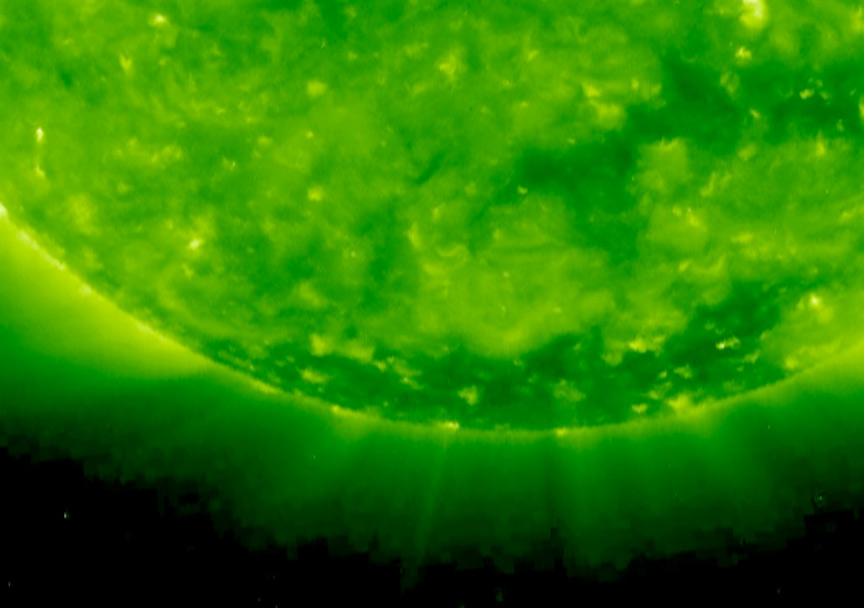|
Important notice about STEREO Behind
Solar South Pole up close

A close-up look at the Sun's atmosphere (the corona) in the southern polar region from the STEREO's (Behind) spacecraft reveals a darker area that still is bustling with activity. These large dark areas are called "coronal holes." Over a three-day period, we can see tiny jets popping up and field lines shifting (July 23-25, 2008). In fact, the rest of the surface area visible in this close-up shows a constantly changing surface.
Such a detailed view over this large region is only possible with STEREO's high resolution imager. Since coronal holes are 'open' magnetically, strong solar wind gusts can escape from them and carry gas from the solar atmosphere out into space. These magnetic fields in polar coronal holes must extend from one pole to the other, but they extend so far out into space that we have not been able to track them with certainty.
Polar holes are easily discerned these days since the Sun is at its period of least activity (solar minimum) in the 11-year solar cycle. At this point, the Sun's magnetic field is simplifying so that it is like the magnetic field around a bar magnet. Coronal holes appear darker because there is simply less hot gas emitting at temperatures high enough to be seen in this wavelength of ultraviolet (produced by material at 1.6 million degree C).
Last Revised: May 17, 2024 19:10:34 UTC
Responsible NASA Official: 
Privacy Policy and Important Notices
Webmaster: Apexa Patel
|